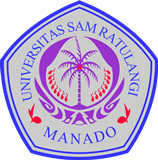On-yomi dan Kun-yomi pada Huruf Kanji
Abstract
There are three important things in studying Kanji letters in Japanese. These are the way of writing, the way of reading, and the meaning. Of these three things the way of reading Kanji is quite difficult to study due to the way of reading kanji is still subdivided into three parts: onyomi and kunyomi (the way of reading on and kun) The way of reading on is the way of reading kanji which is taken from Chinese . whereas the way of reading kun is a way of reading originated from the Japanese itself. Generally, the way of reading on is the way of reading two letters or more which are combined into one and the result of this combination is a new word with the new meaning. The way of reading kun is not like that of on., however, it’s only a kanji that can stand alone which has its own meaning without combination The important things that we should study in reading on and kun in kanji letters are to know clearly the difference of the meaning of the new vocabulary either from the combined kanji or the kanji which is stand alone. It also helps us in translating a new vocabulary that arises when we are translating a sentence in a reading passage. We can also understand clearly how to use Kanji dictionary and to know the new vocabulary that arises from each sentence that we are translating. To know when the kanji letters is red in on way and when to read it in kun way, the following are the things that we need to study.
Full Text:
PDFReferences
Akiyasu Todo, 1972 “学習漢字辞典”. Shoogakukan, Tokyo
Chieko Kano, 1991 “Basic Kanji Book”. Bonjinsha, Tokyo
Keraf Gorys, 1980, “Komposisi”. Nusa Indah, Jakarta
Ishida, 1973, “Kanji Jiten”. Bunkanjoo, Tokyo
Mura Ishi, tanpa tahun, “国語辞典”. Kumon, Tokyo Japan
Moriyama Tae, M.A, “Petunjuk Praktis Memahami Tanda Berhuruf Kanji”.
Patede Mansoer DR. “Analisis Kesalahan”. Nusa Indah, Bandung
Sibarani Robert, 1992, “Hakekat Bahasa”. P.T.Citra Aditya Bakti
Sawako, 1996, “現代実用辞典”. Kodansha, Tokyo
Satoshi Sako, M.A., 1995, ”音読みと訓読み”. Seminar Nasional dan Kongres II ASJI, Jakarta
DOI: https://doi.org/10.35801/tsss.2022.4.1.41566
Refbacks
- There are currently no refbacks.

All articles published by The Studies of Social Sciences is licensed under a Creative Commons Attribution-NonCommercial 4.0 International License.






1.gif)